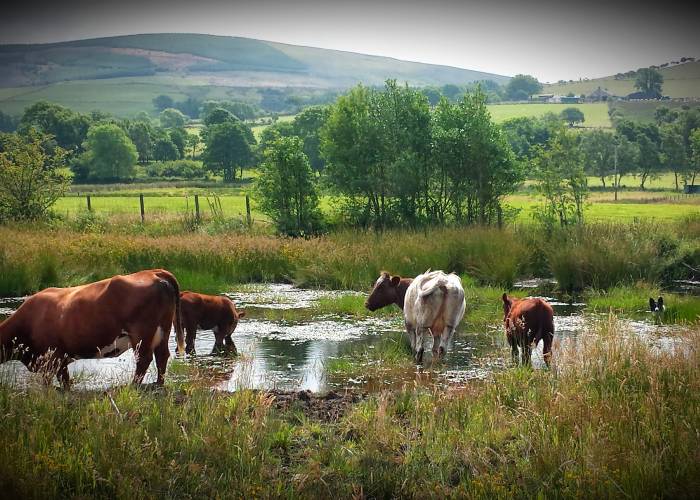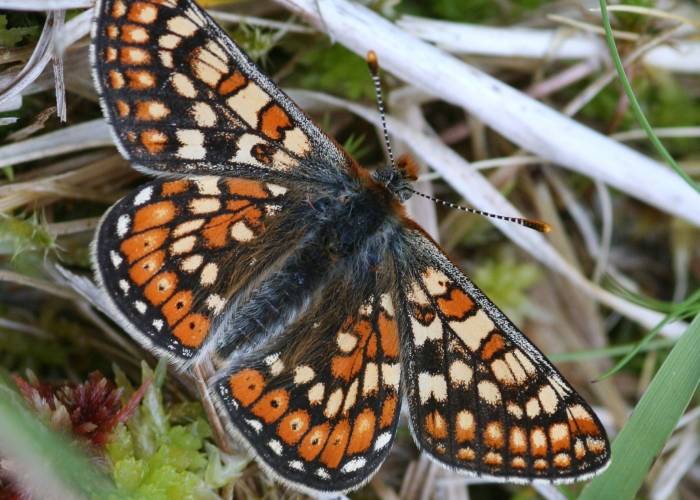



Our small farm in the Wild Ennerdale valley is a haven for many types of wildlife. The river Ehen which flows through the farm is a Site of Special Scientific Interest. Its crystal clear water contains salmon, wild brown trout, sea trout and is the only river in England with a sustainable population of freshwater pearl mussels.
We manage the meadow over the bridge as a traditional hay meadow. Over the years the variety and abundance of fine grasses and flowers have increased. We cut it in late summer for haylage or if the weather is dry enough hay.
The common is now home to the rare marsh fritillary butterfly ( which is one of the most highly protected butterflies in Europe) The common had not been managed for over 20 years. We have worked with Butterfly Conservation and Natural England to remove scrub and weeds and work out how to manage the habitats. After several years of work, the site was considered suitable to be one of the first sites where the marsh fritillary would be reintroduced after becoming extinct in Cumbria. The butterfly is now well established and is colonising nearby sites naturally.
The common is a haven for wildlife, many species of butterfly, red-crested newts, deer, barn owls and red squirrel have all returned.
The common has areas of wetland; lowland heath and purple moor grass and rush pasture. In spring and early summer orchids, bird’s foot trefoil, vetches, marsh thistle and other species can be seen in flower. Later in the season black knapweed, heather and devils bit scabious the food plant of the marsh fritillary can be found.
Our main tool for managing the common is our small herd of rare breed beef shorthorn cattle. The cattle eat the coarse vegetation and help wildflowers to spread by creating small areas of bare soil where seeds can germinate in their hoof prints. We move the cattle on and off the common to create the ideal sward for the butterfly.